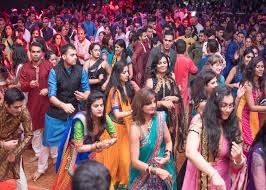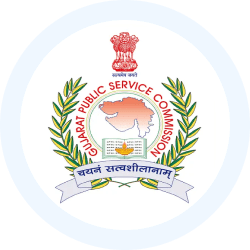GPSC (Gujarat) Exam > GPSC (Gujarat) Notes > Gujarat State PSC (GPSC) Preparation: All subjects > Gujarat: Populations
Gujarat: Populations | Gujarat State PSC (GPSC) Preparation: All subjects - GPSC (Gujarat) PDF Download
| Table of contents |

|
| Population of Gujarat |

|
| Age Groupwise Distribution in Population Census |

|
| Growth Trends in Gujarat |

|
| Child Population (0-6 years) |

|
| Literacy Rate Definition |

|
Population of Gujarat
- Demographics Overview: As per the 2011 Census, Gujarat comprises 26 districts, 225 talukas, 348 towns (195 statutory and 153 census towns), and 18,225 villages inclusive of uninhabited ones. The Census also reflects an increase in towns by 106, including 27 statutory towns and 79 census towns compared to 2001.
- Administrative Changes: In an effort to enhance administrative efficiency, the Government of Gujarat established 7 new districts and 23 talukas on August 13, 2013. Consequently, since August 15, 2013, Gujarat has a total of 33 districts and 250 talukas.
- Population Breakdown: As of March 1, 2011, India's population stood at 121.09 crore, with Gujarat contributing 6.04 crore individuals, comprising 3.15 crore males and 2.89 crore females. The rural populace accounts for 3.47 crore, while urban areas house 2.57 crore residents. Over the past decade, rural numbers have grown by 29.54 lakh, while urban areas have seen an increase of 68.15 lakh.

Growth and Distribution
- Population Growth: The demographic landscape of Gujarat has witnessed dynamic changes over the years, with significant population growth recorded in both rural and urban areas. This growth indicates evolving societal patterns and infrastructural demands.
- Regional Expansion: The formation of new districts and talukas reflects the state's commitment to better governance and localized administration. Such expansions aim to bring services closer to the populace and streamline developmental initiatives.
Population Overview of Gujarat
- Gujarat's Population Ranking: Gujarat holds the 10th position among all states in India based on population metrics and ranks 14th (excluding Union Territories) in terms of population density. It covers 5.97% of India's total area and accommodates 4.99% of the country's population.
- Population Distribution in Gujarat: Three key districts—Ahmedabad, Surat, and Vadodara—contribute significantly, comprising 29% of Gujarat's population. Furthermore, approximately half of the state's residents reside in seven districts, namely Ahmedabad, Surat, Vadodara, Rajkot, Banas Kantha, Bhavnagar, and Junagadh.
- Key District Populations: Ahmedabad emerges as the most populous district in Gujarat, recording a population of 72.14 lakh, followed by Surat with 60.81 lakh inhabitants. In contrast, The Dangs district has the lowest population count, standing at 2.28 lakh.
Age Groupwise Distribution in Population Census
Importance of Age Distribution in Census Data
- Age plays a crucial role in population census as it provides essential insights for understanding demographics and projecting future population trends. An analysis of age distribution allows for a detailed examination of different age groups within a population.
Changes in Age Groups Over Time
The distribution of age groups has seen notable shifts between the census years 2001 and 2011. Let's explore these changes in detail:
- Adolescent Population (Aged 10-19 years): The proportion of adolescents decreased by 1.55% from 21.43% in 2001 to 19.88% in 2011. This decline indicates a change in the demographic composition of this age group over the decade.
- Youth Population (Aged 15-24 years): The youth population also experienced a reduction, with a decrease of 0.51% from 19.78% in 2001 to 19.27% in 2011. This shift suggests a slight decrease in the number of individuals in this age bracket.
- Working Age Population (Aged 15-59 years): The working-age population witnessed a decline of 2.63% from 62.82% in 2001 to 60.19% in 2011. This change indicates a shift in the proportion of individuals within the working-age range.
- Elderly Population (Aged 60 years and above): In contrast to other age groups, individuals aged 60 years and above saw an increase of 1.01% from 6.91% in 2001 to 7.92% in 2011. This rise reflects a growing proportion of elderly individuals within the overall population.
Urban-Rural Population Proportion in Gujarat
- During the last decade, the rural population in Gujarat accounted for 57.4% of the total population, marking a 5.2% decrease, while the urban population constituted 42.6%, reflecting a 5.2% increase.
Decennial Growth Rate in Gujarat
- At the dawn of the 21st century, Gujarat housed a population of 5.07 crore. By the 2011 Census, this figure had risen to 6.04 crore, denoting a decadal growth rate of 19.3%, surpassing the national growth rate of 17.7%. Notably, rural areas saw a growth rate of 9.3%, contrasting with the urban growth rate of 36.0%.
Question for Gujarat: PopulationsTry yourself: What was the decadal growth rate of the rural population in Gujarat as per the 2011 Census data?View Solution
Growth Trends in Gujarat
- The growth rate in Gujarat from 2001 to 2011 decreased by 3.4% compared to the 1991-2001 period, which stood at 22.7%. Despite the overall decline, districts like Kachchh, Amreli, and Dohad experienced increased growth rates compared to the previous decade. For instance, in Narmada district...
Growth Rate Trends in Gujarat
- Between 2001-2011, Surat district experienced a significant growth rate of 42.2%, marking it as the highest among all districts in Gujarat. During 1991-2001, Surat also led with a growth rate of 54.3%.
- Seven other districts surpassed the state growth rate in the 2011 Census. These include Kachchh (32.2%), Dohad (30.0%), Banaskantha (24.6%), Ahmedabad (22.4%), The Dangs (22.3%), Valsad (20.9%), and Rajkot (20.0%).
- Conversely, 12 districts exhibited notably low growth rates, such as Navsari (8.2%), Amreli (8.6%), Porbandar (9.1%), Mahesana (10.3%), Junagadh (12.0%), Tapi (12.1%), Gandhinagar (12.5%), Anand (12.7%), Kheda (12.9%), Bharuch (13.2%), Jamnagar (13.4%), and Patan (13.6%).
Sex Ratio Dynamics
- Definition and National Trends:
- The sex ratio represents the number of females per 1000 males in the population.
- Notably, the national sex ratio in 2001 stood at 933, experiencing a modest increase to 943 by 2011.
- Rural and Urban Disparities:
- Within this period, rural regions witnessed a marginal rise of 3 points from 946 to 949.
- In contrast, urban areas observed a more significant surge by 29 points, escalating from 900 to 929.
Child Population (0-6 years)
- As per the 2011 Census, the total child population in the age group of 0-6 years in the state is 77.77 lakh. Within this, the rural child population stands at 48.25 lakh, while the urban child population is 29.52 lakh. This marks an increase from 75.32 lakh in 2001, showing a growth rate of 3.25%.
Child Sex Ratio (0-6 years)
- According to the 2011 Census, there has been a national decrease of 9 points in the child sex ratio for the age group of 0-6 years, dropping from 927 in 2001 to 918 in 2011.
- Over the same period, rural areas witnessed an 11-point decline (from 934 to 923), while urban areas experienced a 1-point decrease (from 906 to 905). This decline in child sex ratio has been observed consistently at the all-India level over the past five decades.
Child Sex Ratio in Gujarat
- The child sex ratio in Gujarat witnessed a positive trend, rising from 883 in 2001 to 890 in 2011.
- In rural areas, the ratio increased from 906 in 2001 to 914 in 2011, showcasing an improvement.
- Notably, urban areas experienced a significant increase by 15 points, reaching 852 in 2011 from 837 in 2001.
- This marks the first instance in the past fifty years where Gujarat has seen an enhancement in the child sex ratio over the decade from 2001 to 2011.
Literacy Rate Definition
- The literacy rate, as defined in the census, identifies a person as literate if they can read and write in any language with comprehension.
- It's important to note that children under the age of 7 are not classified as literate, even if they possess reading and writing abilities with understanding.
- Example for Child Sex Ratio: For instance, the improvement in rural child sex ratios from 906 to 914 signifies advancements in education and awareness among communities residing outside urban centers.
- Example for Literacy Rate: An example illustrating the literacy rate definition could be a scenario where a 6-year-old child in Gujarat can read and write proficiently but would not be considered literate according to census criteria due to their age.
Literacy Rate in Gujarat - Census 2011
Overall Literacy Rate
- The literacy rate in Gujarat, based on the 2011 population census, is recorded at 78.0%.
Rural vs Urban Literacy Rates
- In rural areas, the literacy rate stands at 71.7%, whereas in urban areas, it is significantly higher at 86.3%.
- Over the decade, there has been an increase of 8.9 percentage points in the overall literacy rate.
- The increase in rural areas is more pronounced at 10.4 points, compared to the urban increase of 4.5 points.
Gender Disparities
- The male literacy rate is notably higher at 85.8% compared to the female literacy rate of 69.7%.
- Significantly, there has been a greater increase in female literacy rates over the decade across all areas.
- The gap between male and female literacy rates has decreased from 21.9 points in 2001 to 16.1 points in 2011.
- In rural areas, the gap is 20.2 points, while in urban areas, it is 10.0 points.
District-wise Analysis
- Surat district leads in literacy with 85.5%, followed by Ahmedabad at 85.3% and Anand at 84.4%.
- Conversely, Dohad district has the lowest literacy rate at 58.8%, followed by Banaskantha at 65.3% and Tapi at 68.3%.
Sex-wise Literacy Rates
- Gandhinagar district ranks highest in terms of sex-wise literacy rate at 92.0%.
The document Gujarat: Populations | Gujarat State PSC (GPSC) Preparation: All subjects - GPSC (Gujarat) is a part of the GPSC (Gujarat) Course Gujarat State PSC (GPSC) Preparation: All subjects.
All you need of GPSC (Gujarat) at this link: GPSC (Gujarat)
FAQs on Gujarat: Populations - Gujarat State PSC (GPSC) Preparation: All subjects - GPSC (Gujarat)
| 1. What is the current population of Gujarat? |  |
Ans. The current population of Gujarat is approximately XXX million.
| 2. How is the age groupwise distribution in the population census of Gujarat? |  |
Ans. The age groupwise distribution in the population census of Gujarat shows that the highest percentage of the population falls in the age group of XXX-XXX years.
| 3. What is the urban-rural population proportion in Gujarat? |  |
Ans. The urban-rural population proportion in Gujarat is approximately XX:XX.
| 4. What is the decennial growth rate in Gujarat? |  |
Ans. The decennial growth rate in Gujarat is currently at X%.
| 5. What is the child sex ratio in Gujarat? |  |
Ans. The child sex ratio in Gujarat is XXX females per 1000 males in the age group of 0-6 years.
Related Searches















